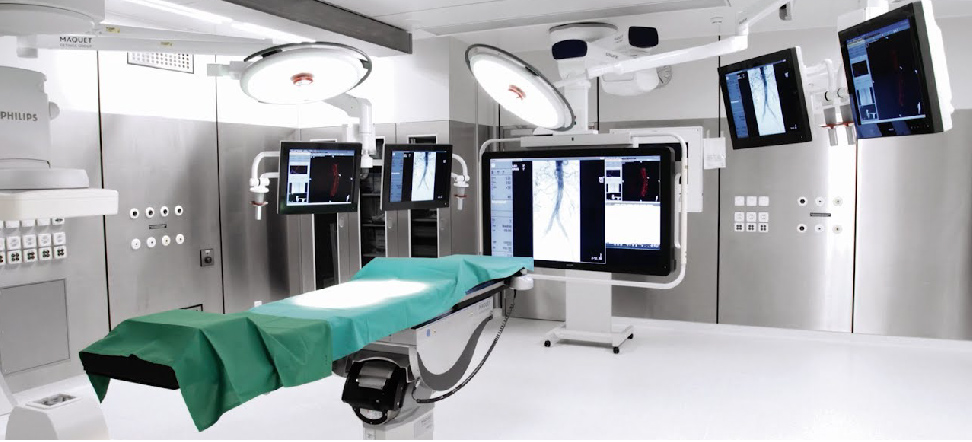Electrical safety in hospital facilities
By Eng. Ronald Gómez, Prysmian Goup
Although we are already familiar with the use of electrical energy, it is still common to see faulty electrical installations that are poorly designed, poorly executed, without earthing, and with inadequate protections. The average user does not know this reality or thinks that, since there have been no problems so far, this situation will remain as it is.
It should be noted that most fires occur due to failures in electrical installations and equipment, which is particularly dangerous in hospitals and medical centers. To avoid this, installation design, its materials, execution, use, and maintenance must be aligned.
In a health facility, patients have an extremely low resistance to the flow of electrical current, which increases the risk of a shock in case of a failure on the electrical equipment around them. An electric shock acts as follows:
- As the electrical current increases, different effects on the individual’s nerves and muscles occur. Initially, there is a barely perceptible tingling sensation, but it becomes annoying and then painful as it increases.
- If the electrical current continues to rise, muscle contractions begin until the tetanization (uncontrolled movement of muscles due to the passage of the electrical current, which nullifies the ability of muscle control). At the same time, the temperature rises due to the Joule effect (heat generated by a resistor when a current crosses it). This rapid overheating may cause burns at contact points or in areas near discharge due to higher current density at those points. The electric current that passes through affects the organs interposed in the circulation zone.
- Since the heart is a muscle, it is particularly affected when involved in the electrical circuit. If the electrical current is large, it causes fibrillation of the entire muscle and stops blood circulation. If the time of the electrical shock is short, the heartbeat is automatically restored. However, sequelae may remain in the organs that lacked oxygenation during that period, mainly in the brain. A lower-value current will only affect part of the myocardial fibers by interrupting regular synchronization. That lack of synchronism is called fibrillation. If ventricular fibrillation occurs, it must be reversed with medical equipment (cardioverter) timely. Otherwise, the person dies because the heart cannot go into sync on its own.
To prevent these accidents, engineers must follow established guidelines.
Electrical care in a hospital
Throughout Central America, we have the NEC, also known as the “Electric Bible,” which shows us the guidelines to follow in any type of electrical design, including those for hospitals.
In Costa Rica, the electrical wiring of the fixed installation of any building is designed considering the electrical code NEC 2014 in Spanish (NFPA 70). Specifically for hospitals or medical centers, Article 517 of NEC establishes guidelines for health care building facilities.
One main aspect of the electrical design of a hospital is to have at least two connections, which must come from different circuits because, in case of a problem and/or repairs or maintenance of one of the connections, the second one automatically comes into operation. In addition to the connections, fossil-fuel-powered power plants must be available. These three security measures guarantee an almost uninterrupted electricity service with an extremely low margin of failure since there would be no way for the building to run out of electricity.
Grounding is also an important aspect of any electrical installation, even more so in a hospital. Article 517 of the NEC 2014 emphasizes how to do the wiring and all the different ways to install the groundings in each section of the hospital or medical center.
In areas with general patient beds, each bed must be equipped with at least two branch circuits: one from the regular system and one from the emergency system. Each bed must have at least four sockets, all of which must be listed as a “hospital grade."
All outlets located in bedrooms, bathrooms, playrooms, wards, and patient care areas must be listed and tamper resistant (TR) within the pediatric area. These are the ones that prevent curious children from inserting objects into the outlets and from being injured by an electric shock.
Each bed must be powered by at least two branch circuits in the critical care area, one or more from the emergency system and one or more from the regular system. Each bed must have at least six sockets that must be listed as “hospital type.”
It is important to have GFCI sockets (Ground Fault Circuit Interrupter) in each circuit. These sockets are devices that cut off electricity in milliseconds when they detect the slightest imbalance between the current that goes out through the live conductor and the return through the neutral conductor (which suggests that a part of the electricity is being derived to grounding through another conductor, who could be a person). The main contribution is that electricity is cut off in a shorter time than the breaker. Hospitals do not require the toilet and washbasin to be in the same patient’s room in critical care areas because moisture may be “triggering” the outlets and leaving the room without electricity. Since the patient is in a critical state, there is no danger of a shock but running out of electrical power in the room.
Cabling for Health Centers
We are an innovative global leader when it comes to cable technology, matching that with an impressive global presence. We are in 50 countries with 112 plants, 25 research and development centers, and approximately 30,000 employees. We have a strategic presence that allows us to serve emerging markets and communities around the world easily.
Our passion is to serve you the way you deserve it! Contact our Central American and Caribbean Customer Care Hub, and we will gladly work with you on your project: +506 2298-4800, info.centroamerica@prysmiangroup.com


